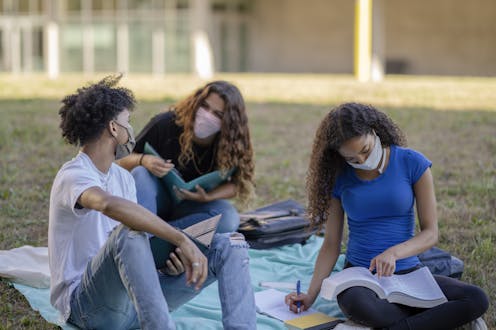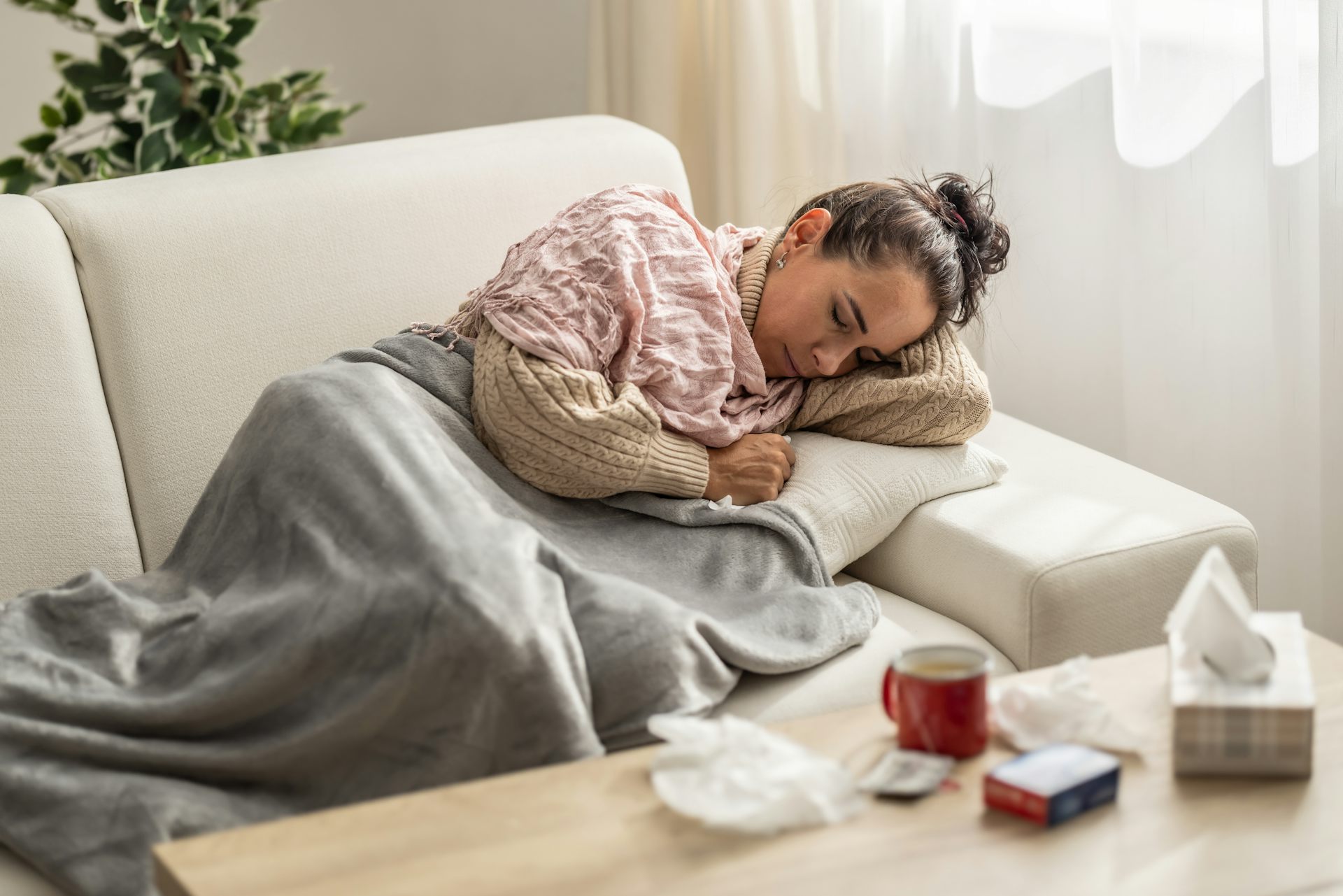5 things to look for on a college campus that benefit mental health
The design of a campus and its buildings and dorms can be crucial to a student's overall well-being.

Researchers have studied college students’ mental health for decades. Even in the 1920s, it was clear that the many stresses of higher education – like academic demands, post-graduation plans and financial concerns – wear on students. This stress can incite new mental health concerns and worsen existing ones, such as anxiety and depression. Sleep disturbances, restlessness, irritability and even feelings of hopelessness can make college feel harder than it already is.
For all of these reasons, it pays to take campus design into consideration when selecting a school. Campus design affects the college experience, and students can choose a campus or change their existing routines to support their mental health. Such consideration is especially important during the COVID-19 pandemic, when new rules and norms have left many students more anxious and depressed than normal.
As a researcher and administrator who focus on the student experience, we’ve analyzed research on how people interact with their environments. Below are five things that we believe students should look for in a college to help them stay as healthy as possible.
1. A quiet sleeping space
Getting a good night’s sleep is a building block for staying mentally well. Sleep-deprived students are more sensitive to disruptions in their day, have trouble staying awake, and have trouble completing tasks. They may also be irritable or easily angered. Significant and frequent sleep disturbances are linked to depression.
The physical environment can influence sleep. Most colleges require students to have at least one roommate, depending on the amenities available. However, roommates’ nighttime conversation or lighting can be disruptive. Students who live alone have better nighttime routines that allow them to get more sleep, but the room where a student sleeps is also important. A room with a comfortable temperature can improve sleep, thereby lowering depressive symptoms, so make sure you can change the temperature in your room. The eco-friendly Dialynas Hall at Pomona College has air conditioning that turns off when the windows open, while nearby Sontag Hall has a rooftop garden for some pre-bedtime fresh air.
Some colleges, like Georgia Tech, are encouraging students to move into single dorms in an attempt to prevent the spread of COVID-19. Still, it may remain difficult to social distance in residence halls that are designed to encourage social interaction through features like shared lounges.
2. Places to socialize
Students seek a supportive campus that makes them feel wanted and accepted, which is possible partly through developing a social network. For those dealing with mental health concerns, though, the fear of social situations often interferes with daily routines, relationships and school work. Even for those without mental health challenges, crowded public spaces can increase stress.
While some students may be tempted to rely on alcohol to ease social anxiety, a healthier strategy is to purposefully find a friend who can provide some positivity in daily life. “Third places,” like coffee shops, are neither home nor classroom, and may offer the opportunity for social support to those lacking connection. University programming, like the University of Utah’s student entrepreneurship residential group, can create support networks among strangers.
COVID-19 restrictions will, no doubt, limit the spontaneous in-person interactions that can make a campus vibrant for some time to come. School-sanctioned social or educational events, like virtual movie nights or skill-building workshops, may provide a social outlet when regular social life doesn’t come easily.
3. Green space and natural light
Natural light – the kind that streams in through a window on a sunny day – offers vitamin D. This free pick-me-up can enhance students’ concentration and productivity, while improving mental health and emotional well-being.
Spending time in nature is just one way to enjoy natural light. Green spaces, such as parks and playing fields, allow students to escape daily stress. Those who regularly connect with nature are generally happier than those who do not. One study connects campus “greenness” to students’ satisfaction with their college experience, as well as graduation rates.
There are plenty of schools to choose from if outdoor space is a priority. Colorado College is nestled in the Rocky Mountain foothills, making it a haven for hikers and climbers, while North Central College is an accredited arboretum. For a change of pace, Florida Gulf Coast University is located a few steps away from sunny beaches in Fort Myers.
It’s easy to take advantage of green space in good weather, but students should create a plan for getting vitamin D in the colder months as well. During this time, light therapy – which can involve sitting under a lamp emitting light that mimics natural light – may be a welcome escape from the winter blues.
[You’re smart and curious about the world. So are The Conversation’s authors and editors. You can get our highlights each weekend.]
4. Nearby services and amenities
College students don’t just study and sleep while they’re getting their degrees. Student services, and access to off-campus amenities, can improve any student’s experience. Campuses that follow this principle are part of a trend in which colleges – often historically located on isolated plots of land – purposefully integrate within their broader communities and cities, planning campuses with students’ daily needs in mind.
For students trying to stay on top of their mental health care, on-campus counseling can be great, but these services are often under-funded and under-staffed. Students’ use of community facilities can positively affect their college experience. While New York City – home to institutions like New York University and Columbia University – is ranked as the number-one “most walkable” city in the United States, Fayetteville, Arkansas, which hosts the University of Arkansas, holds the lowest rank for 2020.
Since some parts of campuses are either shut down or facing higher demand during the pandemic, creating a roster of off-campus resources and emergency service providers can prepare students for any mid-semester surprises.
5. Mood-boosting design
Studies in education show that, from a young age, students’ moods and behaviors are responsive to their learning environments, which affects both their mental health and how they fare in school. A building’s design can affect how people act, feel and make sense of their environments. The colors used in the design of campus buildings can make people feel warm, cool, calm, invited or excluded. For example, while red can be energizing, green can be relaxing, which can affect the functionality of a space for college students.
Beyond paint choices, students’ learning environments should include views that allow their minds and eyes to take a break. Something as simple as a landscape art poster hung indoors can offer stress relief. Many universities, such as Loyola University Chicago, have art galleries that can break up otherwise office-heavy and classroom-heavy views, offering respite from a morning of PowerPoint presentations.
If the campus or local art gallery is closed, students might consider making their own galleries. Many websites curate collections of prints and original works that won’t break the bank, and craft stores stock canvas, paint and other supplies to help them bring out their inner Monet.
Carly Drake works for North Central College, which gets a brief mention in the article for having been designated as an arboretum.
Diane Anstine is affiliated with North Central College which is mentioned briefly in the article.
Read These Next
Why the chemtrail conspiracy theory lingers and grows – and why Tucker Carlson is talking about it
A communications researcher lays out the dynamics of conspiracy theory belief and why they gain traction…
Hybrid workers are putting in 90 fewer minutes of work on Fridays – and an overall shift toward cust
Where, when and how Americans work has dramatically shifted since the COVID-19 pandemic disrupted the…
SNAP benefits have been cut and disrupted – causing more kids to go without enough healthy food and
Having stable access to nutritious food sets children up for better mental and physical health into…





